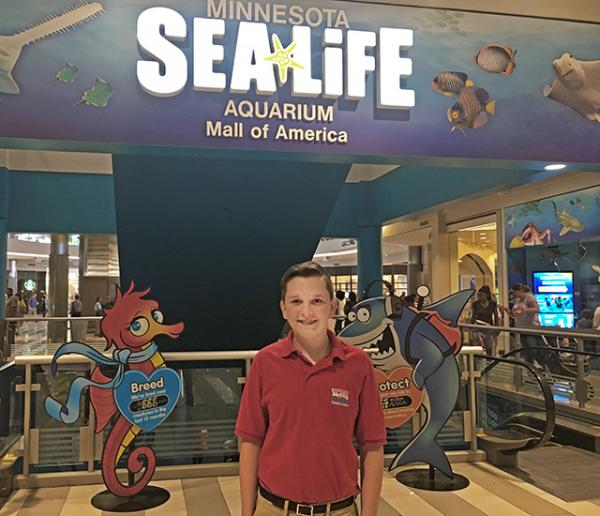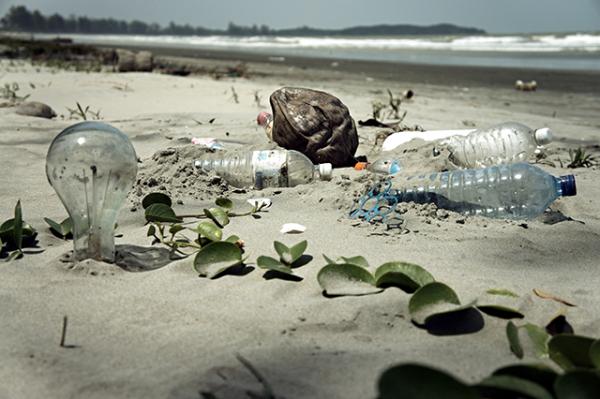KID REPORTERS’ NOTEBOOK
Drowning in Plastic

WATCH THE VIDEO
Click below to learn more about Ryan’s visit to Sea Life Minnesota.
Visitors were amazed to see mermaids swimming at an aquarium at the Mall of America in Bloomington, Minnesota. Sea Life Minnesota recently hosted a group of professional “mermaids” who performed in the largest of 30 specialized tanks.
The finned beauties swam beside fish, sharks, and sea turtles, before climbing ashore to visit with guests and pose for pictures. The mermaids educated their human friends about protecting the oceans and the creatures that live in them.

Ryan at an aquarium at the Mall of America
PLASTIC ISLANDS
One of the biggest threats to the world’s oceans is plastic, a synthetic substance that is not biodegradable. When objects made of plastic get into the sea, they interfere with plant and animal life.
“Even when they’re thrown out properly, plastics float away and make their way into the oceans,” said Adelaide, a “mermaid” from Australia’s Great Barrier Reef. “Unfortunately, now we’re seeing more plastic in the ocean than fish.”
Some marine animals get entangled in pieces of plastic, while others accidentally eat the harmful substance.
“Scientists estimate that up to 26 million tons of plastic waste end up in the ocean each year, killing millions of marine creatures,” said Diana Hein, marketing manager at Sea Life Minnesota. “For example, seabird stomachs are filled with bottle tops that they can’t digest, and turtles choke on plastic bags that they mistake for jellyfish.”

Plastic waste on beaches and in oceans is harming marine life.
REDUCE, REUSE, RECYCLE
Five massive patches of plastic have been identified in oceans worldwide. These huge concentrations of debris are like floating islands. The largest one, between California and Hawaii, is roughly the size of Texas.
Mermaid Adelaide suggested that people consider turning to reusable straws, water bottles, and grocery bags whenever possible. “Getting rid of plastics really helps to keep the oceans cleaner,” she said.
“By reducing, reusing, and recycling,” Hein added, “we can help keep plastic out of our oceans and out of the food chain.”
The mermaids also advised kids not to collect sea shells during visits to the beach. Shells are a key part of the ecosystem. “Shells are really important to hermit crabs,” Adelaide said. “It’s their home, and it’s a way for them to seek shelter from predators. The best thing you can do is throw the shells back in the ocean.”
